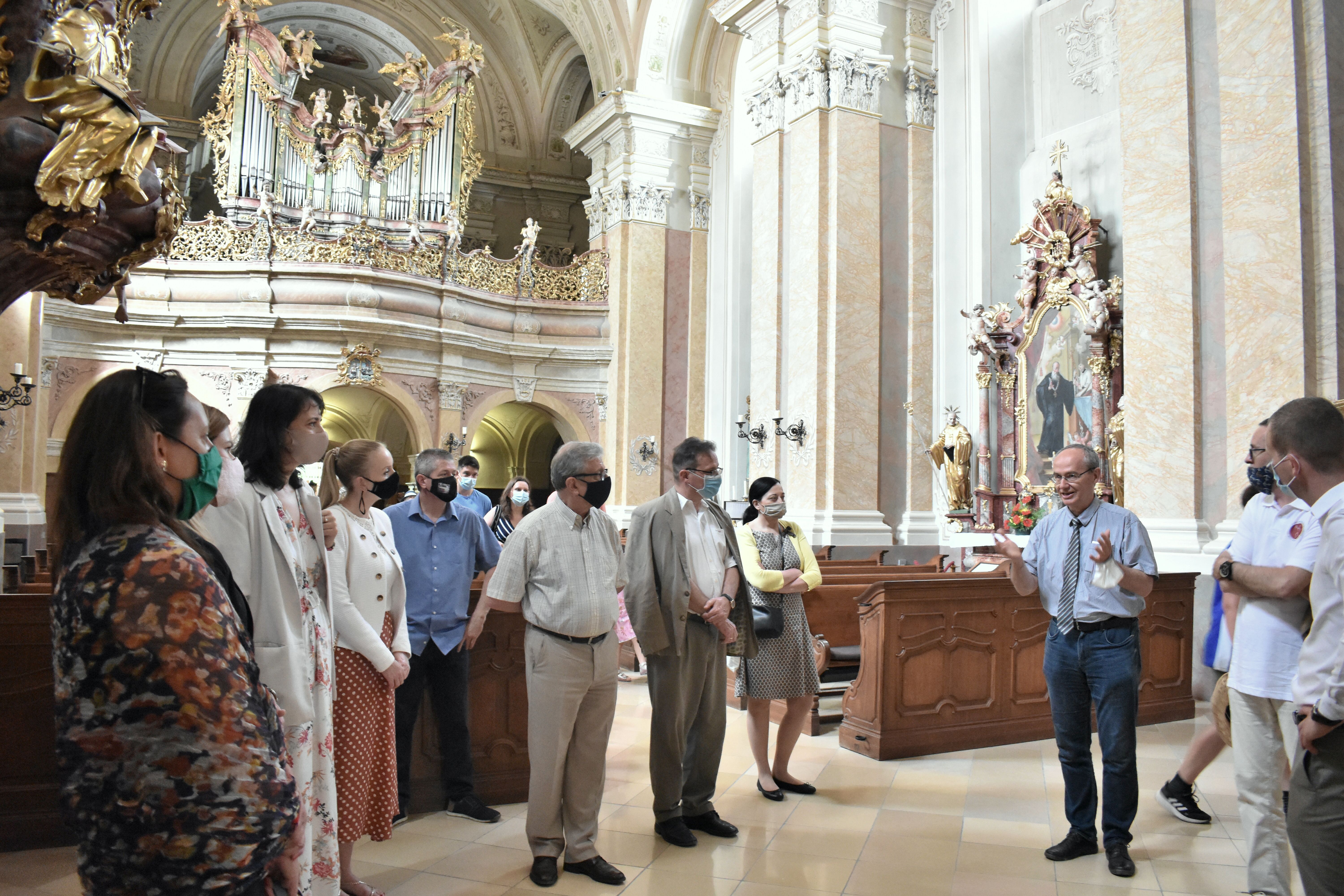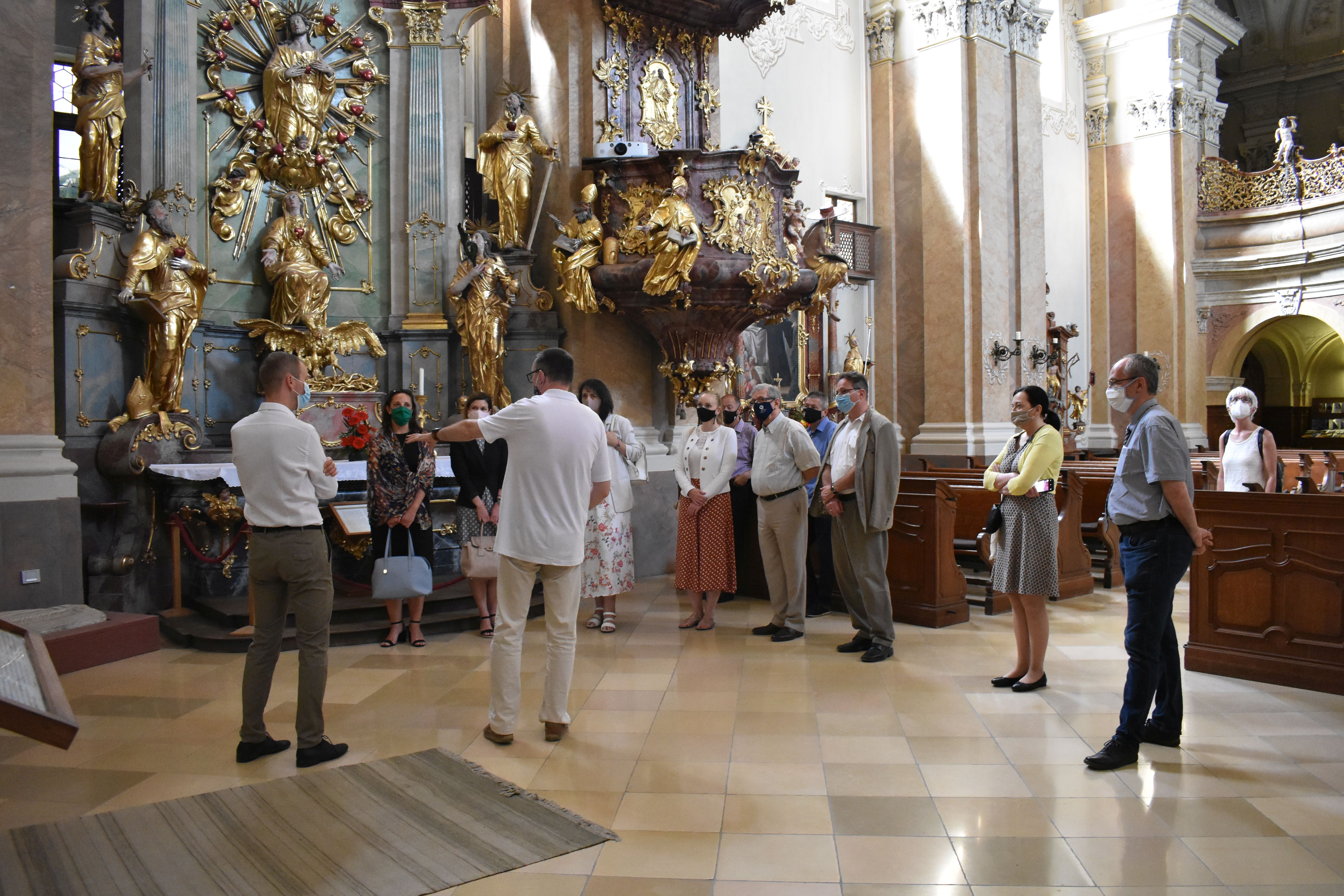
Both the wall research and the excavation were considered a success by the experts, and the tasks set were achieved with results exceeding expectations. "One of the reasons for this was that in 1953 the graves were reburied with the original soil excavated at that time, and this allowed the researchers to find items that were not found then due to their small size and the lack of technical equipment, with the help of a metal detector and a sieve," said Ágoston Takács, the archaeologist in charge of the excavation.
Although some of the finds cannot be linked to graves, the artefacts that have been found illustrate the purposes for which the undercroft may have been used in different periods. The most important and earliest medieval find is a cast floor in the northern part of the sanctuary built in the first construction period in the 11th century and that remained in its original place. Another medieval find worth mentioning is the parvus of King Zsigmond of Luxembourg, a coin roughly equivalent to the penny, but there is no more information about its origin. The relatively modest quantity of medieval artefacts suggests that there were no mass burials here in the Middle Ages, and apart from Andrew I and his son, Prince Dávid, no one else is known to have been buried there during this period.
For example, many lead and iron bullets from the times of the border fortresses were found, but the excavations also uncovered a neck cross and a rosary cross, which clearly belonged to the burials of the Benedictine community that returned in the 18th century. It is safe to say that the Benedictines buried their dead here before the Baroque church was built.
 Photo: Kinga Szőts-Rajkó/RCH
Photo: Kinga Szőts-Rajkó/RCH
Based on historical research and the various chronicle traditions, it is clear that King Andrew I and his son, Prince David were buried in the Benedictine monastery of Tihany. In 1055, King Andrew I founded the Benedictine monastery of Tihany in honor of the Virgin Mary and of St. Ányos, the patron saint of the monarchy. “King Andrew’s endeavor was to connect to King St. Stephen’s church-organizing tradition, he initiated the monastery in Tihany to establish a place for praying for the prosperity of the country,” said Kornél Szovák, project leader, member of the ELKH Scientific Council’s Section of Humanities and Social Sciences, and director of the ELKH BTK Gyula Moravcsik Institute.
However, knowing for sure where a burial took place does not mean that reliable information is available on the remains of the buried persons. Historical data and the results of recent archaeological excavations also suggest that in the earliest centuries of the burial place no persons other than Árpád’s sons were buried in the undercroft. “However, this was no longer the case in the monastery’s modern history, as is made clear by archaeological evidence: the excavation shows several graves buried into one another, probably from the period of Benedictine resettlement,” explained Balázs Gusztáv Mende, paleoanthropologist at BTK, coordinator of the project.
 Photo: Kinga Szőts-Rajkó/RCH
Photo: Kinga Szőts-Rajkó/RCH
The ‘reconstruction’ of the burial site in the central part of the crypt in 1953 with its famous tombstone and the fact that the concrete frame under the tombstone contains bone material from previous burials in the crypt, inevitably led to the misconception that the current project had opened up the ‘original’ tomb of the king, and that the bones in the tomb therefore necessarily belonged to Andrew I. The reality is that the three wooden caskets reinterred in 1953 contained an overwhelming majority of human remains that had been repeatedly disturbed and reburied.
Several steps will precede the archaeogenomic analysis of the bones. During the summer, researchers will carry out carbon isotope dating to establish whether these bones really represent the earliest phase of the crypt burials, and whether the other bone remains really belong to modern era burials, as is assumed. The primary cleaning, restoration and disinfection of the bones has already been completed. The osteological examination of the bones, known as anatomical validation, is in progress. This will be followed by identifying the number, sex and age group of those buried. Genetic methods may have a role to play in this, as there is no other way for researchers to link skeletal fragments that are not clearly anatomically related. In the absence of intermediate skeletal remains, they cannot tell whether the skull remains of an adult male and the femur of an adult male belong to the same person. This means that starting genetic testing partly assumes that the bone remains have already been separated chronologically. Genetic tests are therefore only carried out if the radiocarbon tests indicate early, 11th-12th century samples, otherwise DNA testing – at least from the point of view of research on the Árpád family burials – is irrelevant. If, however, the dating confirms that the bones differing in patination, which refers to the dark, almost blackish color of the bones, are early burials, DNA testing will first aim to determine the Y-chromosomal type of the individuals. The genetic lineage of the Árpáds is known from the analysis of the remains of Béla III, so the basis for comparison is given.

However, even a potentially successful genetic analysis cannot answer the question of whether the remains, if indeed they can be proven to be from the House of Árpád, are those of King Andrew I and/or Prince David. The carbon isotope analysis may be confounded by the fact that the bone remains have been previously coated with a substance or wrapped in paper with a high cellulose content. Together, these can make the bones being tested look younger because of the carbon content subsequently added to the sample. On the other hand, both of them died between the ages of 40 and 45, so the different age characteristics in the bones cannot be identified, especially as the remains are very incomplete. In very favorable circumstances, genetics can offer a solution to father-son separation, but in this case it would require authentic remains of the historically unknown mother of Andrew I and the mother of Prince David, Queen Anastasia, which are not currently available. Despite these difficulties, it is hoped that archaeogenetic research will provide further support for the archaeological observations.
The excavated area will certainly remain open this summer, the professional restoration of the 11th-century site is expected to take place in 2022, after lengthy professional consultation. After watching a film about the Abbey, guests to the visitor center will arrive at the Baroque church and then descend to the Royal Crypt, where they can walk on a steel walkway over the excavation area. In early August there will be several sessions of Old Slavonic, Russian, Ukrainian and Latin Gregorian liturgical chants performed by young singers, taking visitors on a journey back in time.


